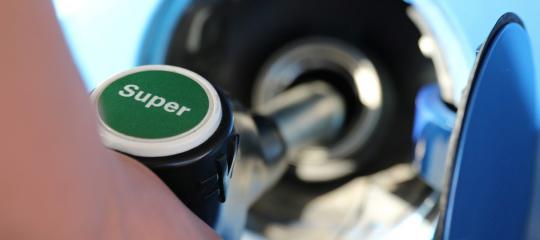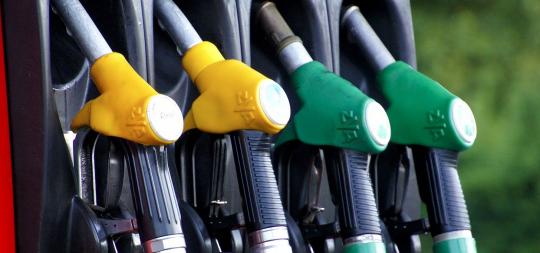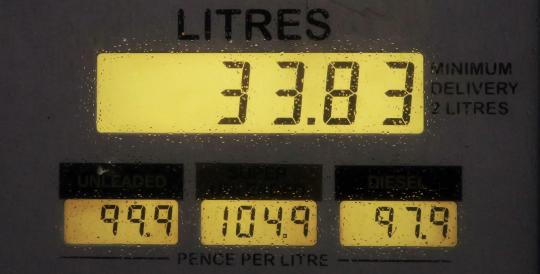 With that in mind, we decided to explain what makes fuel tick. We will only focus this story on diesel and gasoline, without mentioning alternative solutions that have limited availability on a global scale, like LPG or CNG. Evidently, we will not go too far into the field of chemistry, because we will do our best to explain things in layman’s terms.
With that in mind, we decided to explain what makes fuel tick. We will only focus this story on diesel and gasoline, without mentioning alternative solutions that have limited availability on a global scale, like LPG or CNG. Evidently, we will not go too far into the field of chemistry, because we will do our best to explain things in layman’s terms.
Unlike other products, gasoline and diesel have very few specifications that are published and advertised along with their commercial name and price.
Typically, the gas’ main advertised characteristic is the octane rating, but things are different for diesel. Interestingly, both fuels are offered in a more expensive variant by franchised refueling stations, but are they better than the standard units?Gasoline – What its specifications mean for you
 Gasoline, also known as petrol in the UK, is used by spark-ignited engines. Back in the day, all forms of gasoline used to be “additional,” which meant they had an additive that was based on lead. Since the 1970s, that additive started to be phased out, and it got banned altogether in most countries starting with 1995 (USA).
Gasoline, also known as petrol in the UK, is used by spark-ignited engines. Back in the day, all forms of gasoline used to be “additional,” which meant they had an additive that was based on lead. Since the 1970s, that additive started to be phased out, and it got banned altogether in most countries starting with 1995 (USA).
When it was introduced, the lead-based additive would help boost gas’ main advertised characteristic — the octane rating. It also brought the benefit of reducing engine knocking, but that was matched with unleaded gas and better injection systems. Octane ratings range from the high 80s, for some countries, to high 100s, for other markets.
As you can imagine, there’s a big difference between a type of gas that has an octane rating of 88, and one that has an octane rating of 98. Those ten units could mean the difference of your engine running like it is about to die, or not starting at all, versus running “like a dream,“ but that is not universal.
A quick explanation of octane ratings would be that they refer to a fuel’s ability to resist knock or pinging. The higher the score, the greater the resistance to that phenomenon that can happen in an engine’s combustion chamber. Knocking occurs because of many reasons, but with gasoline, it is all about preventing the fuel from igniting because of the level of heat in a combustion chamber.
Typically, gas stations in the USA supply gas with an octane rating that goes from 94 to 97. Meanwhile, in Europe, most countries do not sell gas with an octane rating below 95, and you can buy pump gas with a score of 100. Evidently, the latter is the most expensive of the range, but that is due to production costs of the superior grade fuel.
Another specification of gasoline these days is the Ethanol content, which varies from one continent to another. In the USA, it even varies from one state to another, but laws dictate that most of the gasoline sold in the country not exceed 10% ethanol content. That happens because vehicles sold before 2001 cannot run with more than 10% ethanol.What is the best gasoline grade for your automobile?
 The best answer to this question is found on the small door that conceals your fuel cap. If it does not list the recommended type of gas you should use, refer to the manual of your vehicle.
The best answer to this question is found on the small door that conceals your fuel cap. If it does not list the recommended type of gas you should use, refer to the manual of your vehicle.
In the case of naturally aspirated engines, most vehicles will run on “regular,” but high-performance cars will require the higher grade of fuel.
A car that is prescribed to use “Regular” fuel will run just fine on “Premium,” but that is not the a reason to fill up on the more expensive version, because most vehicles will not get any improvement from the better gas. A study made by the AAA claims otherwise, but its main idea was not to use the cheapest type you can find.
However, running a car that needs “Premium” on “Regular” will lead (no pun intended) to less performance, because the engine’s electronics will dictate a reduction in power to prevent knocking.
Cars that have been heavily modified will usually run on premium fuel, but it is best to find that out before shelling a wad of cash to a tuning company. Using regular instead of premium in a car that used to be able to run on the lower grade gasoline, but has been tuned to a significantly higher specification, will lead to knocking. Furthermore, you also risk damaging the engine because of the use of cheaper gas.Diesel – What are its specifications and what do they mean to you?
 If your vehicle runs on diesel, you have probably noticed that no octane figures are advertised. Instead, diesel fuel is rated with a “cetane number,” which ranges from 40 to 55 around the world. Just like with gasoline, the higher number, the better the fuel. In Europe, diesel fuel must have a minimum cetane number of 51, while North America mandates a minimum of 40.
If your vehicle runs on diesel, you have probably noticed that no octane figures are advertised. Instead, diesel fuel is rated with a “cetane number,” which ranges from 40 to 55 around the world. Just like with gasoline, the higher number, the better the fuel. In Europe, diesel fuel must have a minimum cetane number of 51, while North America mandates a minimum of 40.
Premium diesel fuel does not necessarily have a higher cetane number, as most pumps in Europe (where it is more popular than the USA) sell diesel with a CN (Cetane number) of 51, but you can even find blends with 55. Instead of a higher cetane number, which is not a guarantee of enhanced performance, more expensive grades of diesel feature additives that do many things.
Diesel fuel usually receives additives like detergents, water dispersants, and other substances that are meant to improve lubricity. The detergents are not like those used in your washing machine, but are supposed to clean the fuel injectors as it is sprayed through them, while water dispersants are substances that prevent the accumulation of water.
The use of the latter is to prevent the fuel from freezing during the winter. Also during the winter, refueling stations sell a blend of diesel tha
t supposed to handle the cold better. While that may be true, the usual type is almost as good thanks to laws that obligate fuel suppliers to introduce several additives that prevent that fuel from freezing. When temperatures go to extreme lows, the more expensive version makes sense.
Diesel fuel has another important specification besides its cetane number, and it is the quantity of sulfur. In the USA, all diesel fuel sold after December 1, 2010, must be “Ultra-Low Sulfur,” which holds a maximum of 15 ppm of Sulfur.
Europe applies similar legislation, which has led to the reduction of the maximum sulfur content to 10 ppm in 2009. Sulfur used to be a lubricant in diesel fuel when it was combined with nickel, but oil makers have managed to replace it with alternatives to help it perform as well as the previous standard, Low Sulfur Diesel fuel.What is the best kind of diesel fuel for my vehicle?
 Just like with gasoline engines, diesel-engined motor vehicles have a fuel recommendation on their fuel caps. Instead of an octane rating, it just reads “DIESEL,” and additional references are written in the owner’s manual.
Just like with gasoline engines, diesel-engined motor vehicles have a fuel recommendation on their fuel caps. Instead of an octane rating, it just reads “DIESEL,” and additional references are written in the owner’s manual.
The one thing you should know is never to use diesel that was meant for marine engines or diesel locomotives. That blend is not compliant with current standards, and you risk permanently damaging the emissions control systems of the vehicle.
The same goes for using alternatives to diesel fuel in a modern engine, which might hurt the power plant. Using cooking oil (for example) in a modern diesel will guarantee the destruction of the engine, and not just its emissions controls.
As a rule of thumb, any common rail diesel will not be able to run on oil. If it does start, it will not operate correctly, and its diesel particulate filter will have to be replaced.
Always make sure you refuel your vehicle with the recommended type of fuel for its engine. Avoid driving on reserve (when the fuel light comes on) for extended periods or as a habit, as your fuel pump and fuel filter might be affected by the move. That also applies to regular refuels with low quantities, which might “confuse” your vehicle’s fuel level indicator.








